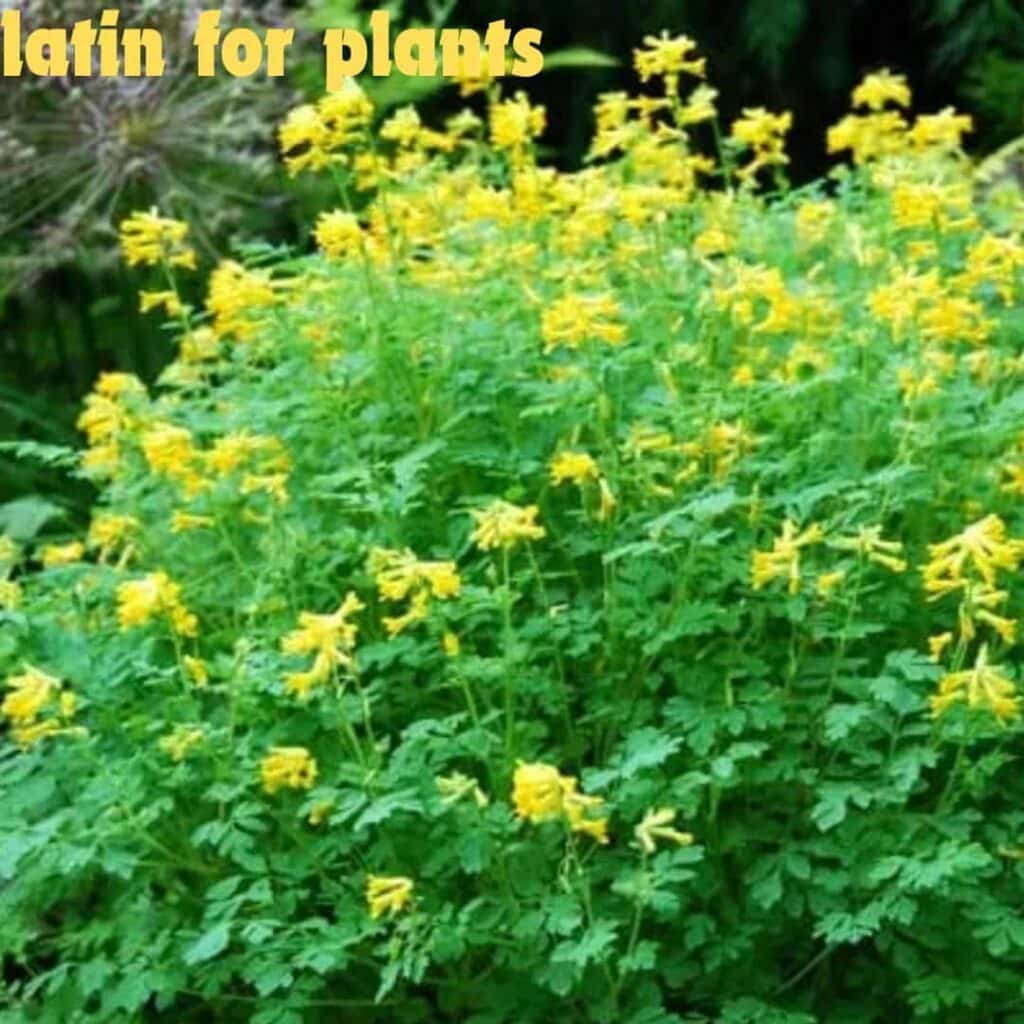How to Grow Best Latin for Plants/ Debates & Importance
Have you ever wondered why plant names sound like magic from a Harry Potter book? That’s because they’re in Latin for Plants ! Comprehending Latin for plants isn’t just for botanists or gardeners; it’s a gateway to a spellbinding world where every plant has a irregular originality.
This essay will dive deep into botanical language, disclosing Latin’s importance, history, and complex points in Latin for plants names.
Understanding the Extent of Latin for Plants
Latin for Plants is important in natural science since it offers a general language for naming plants. This is mainly significant for students, landscapers, and plant fans all over the planet.
By using Latin for Plants , they can keep away from confusion that could occur from territorial language differences. A plant could have different regular names in different polities for the model.

However, its Latin for Plants name will be very similar. This surface ensures that everybody is examining an exact plant. The utilization of Latin for plants naming also mirrors its original importance.
When many Latin for plants were found and described, Latin was the language of students and researchers. Therefore, it shifted into the norm for analytical naming.
Historical Learning of Latin for Plant
The utilization of Latin for Plants naming plants has a rich history dating back to the eighteenth hundred years. Before this period, plant names were oftentimes lengthy and fine, making them hard to recall and utilize reliably. The production of Latin for plants naming worked on this process.
Carl Linnaeus, a Swedish botanist, crafted the important crossroads throughout the entire presence of plant naming. In 1753, Linnaeus spread “Species Plantarum,” a book that selected the groundwork for current herbal language.
He presented the binomial framework, where each Latin for plants is given a two-section Latin name: the mixture and the species. This framework carried request and clearness to the grouping of plants, making it more direct for students to impart and share data about different species.
The Basics of Botanical Latin for Plants
What is Herbal Latin? Herbal Latin is a type of Latin for Plants explicitly used for naming and portraying plants. Unlike old-style Latin, which was used for ordinary posts in old Rome, organic Latin for Plants has a more technical jargon custom-made to the conditions of botanists. This specific language contracts that plant names are exact and unique.
Why Use Latin for Plant Names? Interesting Latin for plants names enjoys a few gifts. To begin with, it gives an all-inclusive language that botanists and horticulturists all over the planet can understand. This is urgent for logical equality and cooperation.
Second, Latin names frequently include specific data about a plant’s qualities, like its tone, shape, or environment, which can be useful in determining and calculating out various species.
Furthermore, on the grounds that Latin for Plants is a “dead” speech, its importance and elocutions don’t change after some time.
The Binomial Nomenclature System
Who Made the Binomial Framework? The binomial jargon framework was made by Carl Linnaeus, a Swedish botanist, zoologist, and doctor. Linnaeus is frequently called the “father of current scientific categorization.” His work during the eighteenth century selected the groundwork for the normalized process of naming living beings that we use today.
Linnaeus’ most well-known work, “Species Plantarum,” circulated in 1753, trained the binomial type framework with selected students, worrying how plants and animals were set.
How Binomial Terminology Functions
How Binomial Terminology Functions : The binomial jargon framework doles out each plant a two-section Latin name. The initial segment is the family, and the following part is the species. This framework ensures that each plant has an exciting and generally smelled name.

The mixture name is always promoted, while the species name isn’t, and both are usually underlined or stressed when transcribed.
Decoding Latin for Plants
Normal Latin Prefixes and Postfixes: Latin for plants names continually include prefixes and additions that display detailed points of the plant. Comprehending these can help you with analyzing the importance of plant names. Here are a few normal ones:
Prefixes:
Full scale: massive (e.g., Macrophyllum – huge left)
Small: little (e.g., Macrocarpa – little fruited)
Flavus-: yellow (e.g., Flavus-yellowish)
Postfixes:
-folia: leaves (e.g., Trifolia – three-leaved)
-verdure: flowers (e.g., Multiflora – many-bloomed)
-carpa: organic product (e.g., Polycarpa – many-fruited)
Comprehending Latin Roots in Plant Names
Latin roots often describe the plant’s rates, living space, or other celebrated highlights. For example:
Rubra: red (e.g., Quercus rubra – red oak)
Alba: white (e.g., Betula alba – white birch)
Aquatica: sea-going, water-adoring (e.g., Sagittaria Aquatica)
By knowing these roots, you can better learn what a plant reaches or where it very well may be hunted down by simply studying its Latin name out.
Latin for Plants Names and Their Importance
Plant Names Showing Type
Latin names often mirror the shade of the plant or its flowers:
Rosa rubiginosa: The name rubiginosa alludes to a oxidized or ruddy tone.
Viola alba: The name alba means white, showing the blossom’s tone.
Sequoia gigantea: The species name gigantea indicates goliath, working for the terror sequoia tree.
Lobelia inflata: The name inflata points expanded, showing the enlarged state of the seed units.
Plant Names Presenting Living Space
Latin names can represent a plant’s favored natural surroundings or conditions:
Eriogonum deserticola: The species name deserticola indicates desert-abiding, showing this plant grows in desert situations.

Aquilegia alpina: The name Alpina guides this plant is seen in snow-capped or rugged sections.
Inflection Tips for Botanical Latin
Basic Presentation Rules: Articulating plant Latin for Plants accurately can be testing, however observing a couple of fundamental guidelines can help: Articulate every vowel alone (e.g., a, e, I, o, u). Put the weight on the penultimate (second-to-endure) syllable. Model: Acer saccharum is articulated “AY-ser sak-KAR-um.”
Losing the pressure: Ensure the pressure is on the right syllable. Shunning vowel section: Articulate every vowel sound unmistakably.
Model: Don’t say Fuchsia as “FYOO-sha”; it should be “FOOKS-ee-a.” Devices for Learning Organic Latin Articulation.
A few tools can help with learning organic Latin elocution:
Online word references and articulation guides (e.g., Merriam-Webster). Universal applications explicitly planned for natural language. Instructive recordings and instructional exercises on stages like YouTube.
The Role of Latin in Modern Botany
Latin in Logical Exploration: Latin staying parts the highest quality level in logical analysis for naming plants and utilizing Latin for Plants guarantees that researchers across the globe can learn and reference similar species without confusion. This surface is essential for the exactitude and reproducibility of investigation findings.
Latin in Cultivation and Planting
In cultivation and planting, Latin names are essential for definitively identifying plants. This is important while buying plants, as regular names can generally differ between locales. Learning the Latin name secures you to get the specific species you need.
The Eventual Fate of Latin in Plant Naming: Notwithstanding the result of idioms and the rise of new logical wording, Latin for Plants will probably stay a foundation of plant naming. Its solidness, accuracy, and authentic importance make it a invaluable device for botanists, horticulturists, and plant followers.
Challenges and Debates
Difficulties of Latin Names: One of the total problems of using Latin plant names is their complexity. For beginners, the Latin language can disturb. In any case, with training and study, these names become more recognizable and simpler to use.
Banters Over Naming Shows: There are going banters in the plant local area about naming shows. Some reason for updating the framework to make it more open, while others have trust in keeping up with the traditional Latin names for their original and outstanding value.
Learning and Using Latin for Plants Names
Assets for Concentrating on Herbal Latin
Books on herbal terminology, for example, “Stearn’s Word reference of Plant Names for Grounds-keepers.” Online courses and instructional exercises zeroed in on herbal Latin.
Greenhouses and arboretums frequently offer studios and directed visits that can upgrade how you might interpret plant names. Pragmatic Ways to Recall Latin Names Here are a few hints to assist you with recollecting Latin plant names:
Use cheat sheets to test your insight into various plant names.
Partner the Latin names with their standard names or attributes.
Practice consistently by marking plants in your nursery with their Latin names.
Consolidating Latin Plant Names in Ordinary Cultivating: Utilizing Latin plant names in regular cultivating can further develop your plant information and relational abilities.
Mark your plants with their Latin names and utilize these names while examining plants with individual landscapers. This training will improve your knowledge with plant language and make you a more educated and expert groundskeeper.
Conclusion
Latin for plants is something other than a naming show; it’s a door to gathering out the complex universe of herbal science. By understanding and using Latin plant names, you gain accuracy in specific plants as well as associate with a rich custom that travels hundreds of years.
Whether you’re a student, groundskeeper, or plant fanatic, overpowering natural Latin can improve your like and news on the plant empire.
FAQS
What is a plant called in Latin?
Planta noun. Planta, fire, grow, sprig, seedling—Herba noun.
What is the Latin name for flower?
Flora. This term denotes “blossom” in Latin.
What is Greek for plant?
Phyto- comes from the Greek phytón, telling “plant.” The related form of phyto- connected to the end of words is -phyte.
What is Greek for flower?
Antho- is a prefix derived from the Antique Greek ἄνθος (anthos) representing “blossom”. It is found in terms such as Anthomania, a habit with blooms. Anthocyanins are a class of phenolic dyes located in plants.
What is plant in Old English?
Etymology. From Middle English plante, from Old English plante (“young tree or shrub, herb just grown”), from Latin planta (“grow, shoot, missing”).
Also Read

3 Comments